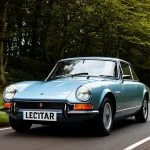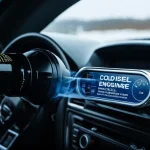Understanding UK Regulations for Classic Car Safety Upgrades
An essential guide for classic car owners
In the UK, classic car regulations set clear boundaries for safety upgrades while preserving a vehicle’s historic value. Owners must ensure any legal upgrades comply with these rules to maintain roadworthiness and insurance coverage. The Driver and Vehicle Licensing Agency (DVLA) requires accurate documentation of modifications, particularly when changes affect a vehicle’s original specification.
Topic to read : Navigating uk regulations for your classic electric car conversion: a simple guide
When upgrading safety features, such as seat belts or lighting, the car must still pass its annual MOT requirements. The MOT test assesses whether these updates meet current safety standards without compromising the classic car’s character. For example, installing modern seat belts is allowed, but they must be of an approved type and correctly fitted to pass the MOT.
The DVLA rules mandate that significant modifications be reported, especially if they affect the vehicle’s identity or category. Updating your V5C registration document post-modification ensures compliance and smooth legal use. Understanding these regulations helps classic car enthusiasts enhance safety while respecting the car’s heritage and the law.
In parallel : Exploring the environmental effects of hybrid vehicles in the uk: a comprehensive analysis
Essential Safety Features to Upgrade in Classic Cars
Enhancing safety while preserving heritage
Classic car safety upgrades are vital for drivers who want to enjoy their vintage vehicles with confidence. First, installing modern seat belts significantly improves occupant protection. Many classic cars either lack seat belts or have outdated lap belts that don’t meet current safety standards. Retro-fitting three-point belts offers better restraint during collisions.
Upgrading brake systems is another crucial step. Classic braking components often lack the responsiveness and stopping power of contemporary systems. Converting to disc brakes or improving hydraulic setups enhances control and reduces stopping distances, aligning with modern safety standards.
Lighting also demands attention. Original classic car lighting may be dim or unreliable. Installing LED or halogen bulbs increases visibility, benefiting both the driver and others on the road. Importantly, these upgrades can be done while respecting the aesthetic integrity of the vehicle.
Integrating airbags and advanced crash protection is challenging but not impossible. Specialized kits add airbags subtly without compromising authenticity. This balanced approach allows drivers to maintain classic car charm while embracing the safety benefits of modern technology.
Step-by-Step Guide to Installing Modern Safety Features
Ensuring your classic car is both stylish and safe
Before you begin how to upgrade classic car safety, a thorough inspection and assessment are essential. Check the vehicle’s frame, electrical system, and brake components to identify areas needing reinforcement or repair. This preparation sets the foundation for a smooth installation process.
When installing common safety features like seat belts, lighting, and brakes, follow a detailed installation guide tailored for classic car modification. For seat belts, attach mounting points securely to the frame using bolts that comply with safety standards. Upgrading lighting involves replacing old bulbs with high-visibility LEDs while maintaining the original lenses to preserve the vintage look. Brake enhancements may require adding modern disc brakes, which improve stopping power and reliability but must be installed carefully to fit the classic car’s existing setup.
A safety feature modification doesn’t mean sacrificing your car’s vintage charm. Retain original panel shapes and finishings by choosing discreet placements and matching materials. Consult a classic car handbook specific to your model to ensure compatibility and maintain authenticity. This balance lets you enjoy modern safety benefits without compromising classic style.
Sourcing Quality Safety Upgrade Parts in the UK
Finding authentic and compatible classic car safety parts in the UK requires careful selection from trusted UK suppliers. For enthusiasts focused on sourcing classic car parts UK, it’s vital to prioritize quality and regulatory compliance to ensure modern safety upgrades enhance rather than compromise your vehicle.
Reputable local suppliers often provide a hands-on approach, allowing for advice tailored to specific classic car models. Many also stock components that meet current safety standards, including advanced seat belts, upgraded brake parts, and modern lighting compatible with older cars. For those preferring convenience, established online marketplaces specialising in classic car safety parts offer extensive catalogues backed by expert reviews and authenticity guarantees.
When sourcing aftermarket safety upgrades, always verify the parts comply with UK and EU safety regulations. This includes confirming certifications and ensuring the materials and design align with your car’s original specifications. Prioritizing quality will improve both road safety and preserve the vehicle’s value over time.
By focusing on trusted UK suppliers and compliance, you’ll secure classic car safety parts that combine heritage with modern protection, making every drive safer and more enjoyable.
Expert Tips for Balancing Authenticity and Enhanced Safety
Balancing classic car restoration tips with safety improvements requires a nuanced approach. Experts suggest preserving the vehicle’s original appearance by using period-correct materials for visible parts while integrating modern safety features discreetly. For instance, upgrading to seat belts that resemble original designs or installing hidden reinforced door beams can improve protection without compromising authenticity.
UK classic car restoration specialists emphasize the importance of sensitive safety upgrades that respect the car’s heritage. This includes fitting modern brake systems calibrated for better stopping power but styled to match original components. Additionally, discreetly mounting LED brake lights can substantially increase visibility without altering the car’s look.
Future-proofing your classic car investment involves balancing the charm of authenticity with practical safety enhancements. Maintaining the original craftsmanship while integrating concealed safety technologies enhances both the vehicle’s value and your peace of mind on today’s roads. Following these expert recommendations ensures classic cars remain stunning yet safe, preserving their legacy for generations with improved functionality.
Classic Car Safety Upgrade Case Studies: Real UK Examples
Discover how classic car owners in the UK have transformed their vehicles through classic car safety case studies. These real-life examples showcase practical approaches to enhancing safety without compromising authenticity. One common challenge is integrating modern braking systems discreetly. Owners often opt for hidden disc brake conversions, balancing improved stopping power with the classic look.
Cost considerations vary, typically ranging from a few hundred to several thousand pounds, depending on the extent of modifications. For example, a vintage Jaguar owner tackled wiring issues to install contemporary seatbelts and airbags, highlighting the importance of professional wiring expertise. These UK car modification examples prove that investing in quality parts and skilled labor ensures reliable, safe upgrades.
Before-and-after results often impress owners, with many reporting enhanced confidence during driving and better protection for passengers. Positive feedback consistently emphasizes how thoughtful upgrades preserve the car’s charm while meeting modern safety standards. Such classic car upgrade success stories encourage other enthusiasts to prioritize safety enhancements, highlighting practical solutions and realistic expectations in the classic car community.


